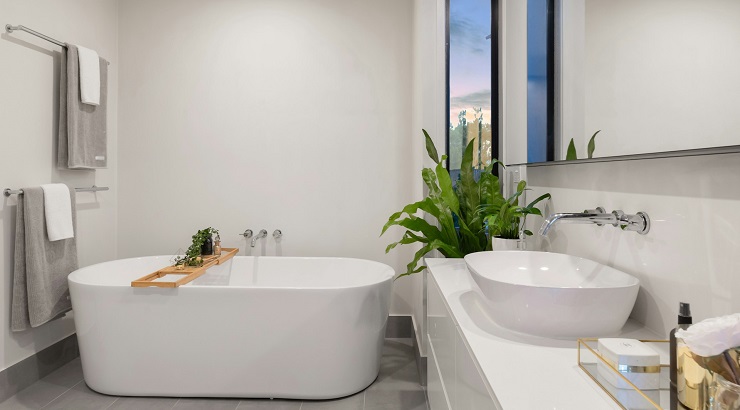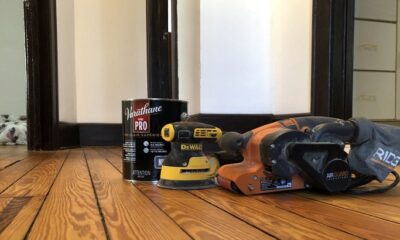DIY Projects
Bathroom Renovations Checklist for Success
A checklist to help you run successful bathroom remodel projects.

Revamping a bathroom can feel like diving into a sea of decisions. From choosing the right fixtures to pondering color schemes, the choices can be overwhelming.
But guess what? We’re here to turn that challenge into a breeze with our friendly bathroom renovations checklist.
Let’s simplify your dream bathroom journey.
1. Budgeting
Effective budgeting is the basis for successful bathroom renovations. Research the costs of materials and labor, obtaining multiple quotes to ensure accuracy.
Set a realistic budget that covers fixtures, materials, professional services, and potential unexpected expenses.
Be sure to allocate a contingency fund to address any challenges that may arise during the renovation process, providing financial flexibility and peace of mind.
2. Design and layout
Careful consideration of the bathroom’s design and layout is crucial for creating a stylish, functional space. Measure the dimensions of the bathroom and carefully plan the placement of fixtures to optimize space usage.
Consider traffic flow and accessibility to ensure that the chosen layout aligns with your daily routine, enhancing the overall convenience of the space.
Additionally, select a cohesive design style that resonates with your preferences, harmonizing colors, textures, and finishes for a visually appealing and unified look.
RELATED: Remodelling a Bathroom in 7 Simple Steps
3. Fixtures and features
The selection of fixtures and features significantly contributes to the overall success of your bathroom remodel.
Research and compare different options for sinks, toilets, bathtubs, or showers, considering both style and quality.
Ensure that the chosen fixtures complement the overall design theme, creating a harmonious and functional ensemble in your bathroom.
Additionally, prioritize energy-efficient and water-saving options to enhance sustainability and reduce long-term utility costs.
4. Materials and surfaces
Choosing the right materials and surfaces is crucial for the durability and aesthetics of your renovated bathroom.
Go for slip-resistant flooring materials to enhance safety, especially in wet areas. When selecting materials for walls, prioritize options that are waterproof and mold-resistant to withstand the bathroom’s humid environment.
Consider the longevity of materials and their ability to withstand daily wear and tear, ensuring that your choices contribute to a low-maintenance space.
5. Adequate storage
Adequate storage plays a pivotal role in maintaining a clutter-free bathroom. Evaluate your storage needs based on your daily usage and the items to be stored.
Maximize vertical space with wall-mounted cabinets or shelves to make the most of available square footage.
RELATED: 7 Small Bathroom Remodel Ideas for Your Home
By carefully planning and implementing effective storage solutions, you not only enhance the functionality of the space but also contribute to a clean and inviting atmosphere in your newly renovated bathroom.
6. Lighting and ventilation
Careful consideration of lighting and ventilation is key to creating a comfortable and well-lit bathroom.
Install task lighting around the vanity area to facilitate grooming tasks, and consider incorporating ambient lighting for an inviting atmosphere.
Select ventilation options that meet the bathroom’s square footage requirements to prevent moisture buildup and mold growth.
By balancing natural and artificial light sources while ensuring proper ventilation, you enhance both the functionality and ambiance of your renovated bathroom.
7. Permits and regulations
Before diving into the renovation process, thoroughly research and understand local building codes and zoning regulations.
Comply with these requirements and obtain any necessary permits before commencing construction work.
By addressing regulatory considerations at the outset, you avoid potential legal complications, allowing for a smoother bathroom renovation journey.
8. Timeline and schedule
Break down your bathroom renovation project into well-defined phases with specific timelines. Establishing a realistic schedule helps you stay organized and ensures the smooth progression of the work.
Coordinate closely with contractors and suppliers to avoid delays, and factor in time for any unexpected issues that may arise.
Clear communication and adherence to the timeline contribute to a more efficient and stress-free renovation process, allowing you to complete your project faster.
9. DIY vs. professional services
Assess your skills and comfort level with do-it-yourself (DIY) tasks, and decide which aspects of the renovation you can confidently handle.
For more complex tasks such as plumbing or electrical work, it is advisable to enlist the expertise of professionals to ensure safety and compliance with the law.
Hiring professionals for specialized tasks contributes to the overall quality and longevity of your bathroom remodel, while your involvement in suitable DIY projects can be a rewarding and cost-effective contribution to the process.
10. Cleanup and final touches
Once the construction phase is complete, prioritize a thorough cleanup to remove debris and dust, leaving your new bathroom in pristine condition.
Dispose of construction waste responsibly and, if needed, schedule professional cleaning. Finally, add personal touches to your renovated space with decorative elements, soft furnishings, and accessories.
These final touches not only infuse personality into the design but also transform your bathroom into a welcoming and comfortable retreat, ready for everyday use.












